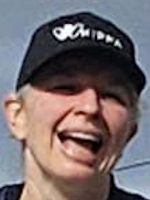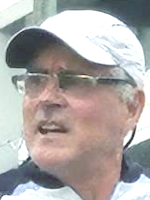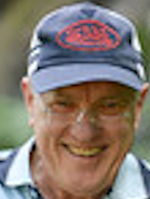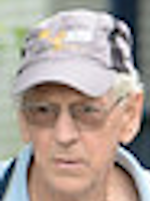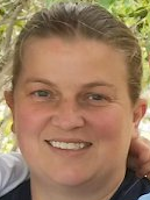 Organising Minor Events
Organising Minor Events
A Guide
[This guide for minor event organisers is based on "A Guide to Organising Minor Events", published by Orienteering NSW, with emendations.]
1. INTRODUCTION
This Guide is aimed especially for the "first time" or relatively inexperienced event organiser by providing sufficient details to minimise the chance of difficulties.
It assumes that the event organiser has assisted in the administrative aspect of several previous events.
It is not intended to be a rigid organisation prescription as more experienced organisers will adapt or devise organisation ideas to suit their own particular needs and style.
The type of events for which the guide is intended are events held over approximately a 3 hour start period (Saturday afternoon or Sunday morning).
These events will:
- provide entry on the day of the event
- allow each participant to choose their own start time independently of other participants
- permit entry on any courses available on the day to everybody (novice should be discouraged from entering advanced courses because of safety considerations and due to overly difficult courses being discouraging).
Participants may have travelled considerable distance and often at quite some expense both
financially and timewise to come to the event.
It is the organiser’s responsibility to the participants, the crew, the club and the sport to ensure a successful event. The key here is to prevent problems from arising during the event, as problems create additional pressures which in turn create more additional problems and the situation can rapidly deteriorate.Thought and preparation can minimise this possibility.
The time schedule suggested will allow adequate time to deal with most unforeseen problems.
Each event should have an experienced orienteer assigned to advise where appropriate or as
required.
If in any doubt, do not hesitate to contact this person. The success of the event is
the first priority, so don't risk avoidable problems.
2. DATE
The date is decided by the ONSW on advice of the Club.
Details of the date and other information as required should be forwarded to the ONSW Secretary before the newsletter deadline.
3. AREA
The area is chosen by the Club after consideration of availability of maps.
Before the Event
As access to and continued use of areas is dependent on good relationships with landowners or authorities, this is an important consideration.
Personal contact is usually the best approach. Ensure that all landowners or authorities
have approved the use of the area before detailed planning is commenced. Check with property owners 3 or 4 weeks before the event as there may be specific requirements regarding certain areas or stock.
At the Event
Ensure that prohibited areas are clearly shown on the map and that these and specific instructions to participants are made known clearly before the
start.
After the Event
Ensure that all rubbish etc. is cleared up.
Thank the landowner personally, or if not possible then by mail.
4. ASSEMBLY AREA
Orienteering has a large number of family members and this adds some special considerations:
Toilets should be available at all events. These may be already available at or near the assembly area, or portable toilets may need to be erected.
Adequate and safe off-road parking should be available at, or near to the assembly area.
Dangers such as water-holes, cliffs, pits and rubbish should also be avoided.
Shelter, particularly in case of wet weather is a great asset if available on site, otherwise tents may need to be organised.
The assembly must be inspected before the event day and the specific layout of Start, Finish, Registration, location of various signs, Parking etc. planned in detail (preferably with an event assistant). Organise the start to promote a flow of people from car-park > registration > start > finish, so there is no cross traffic.
5. MAP
Map and courses must be checked at least 4 weeks before the event and corrections noted as "map corrections". (A check a few days before the event may also be necessary where there is activity in the map area).
Ensure that there are enough copies to meet anticipated numbers.
Know who has the maps (mapper, club secretary, etc.).
6. COURSES
The range of courses will vary depending on the requirements of the event, the suitability of area and map, the wishes of the event Organizer / Planner and club policy.
Orienteering NSW has adopted grades of difficulty of courses. These are:
- VERY EASY: The course MUST follow handrails and use large obvious features along the handrails as control sites. Many controls should be used. Limited compass for orientation of map - NO BEARINGS.
- EASY: Easy controls using handrails and introduction of contour handrails (spurs, gullies). Some route choices (follow handrails or cut across). Large, obvious features just off the handrails as control sites. LIMITED COMPASS but no accurate bearings required.
- MODERATE: Route choice with good attack points near controls and catching features behind. Use of compass bearings and pacing introduced. Control sites on smaller point features.
- HARD: Very difficult navigation. Small point features, no obvious attack points, no handrails, etc. Use of detailed areas on map.
All minor events should try to provide courses in all of these grades of difficulty, however, it is rarely possible to provide red courses on maps used for minor Events. The following courses are suggested for a typical minor event:
- Moderate 5 km
- Moderate 3 km
- Easy 2.5 km
- Very Easy 2 km
If an area allows for HARD courses, then a program could include:
- Hard 5 km
- Hard 3 km
- Moderate 3 km
- Easy 2.5 km
- Very Easy 2 km
While course setting is a fascinating and challenging aspect of orienteering (there are publications available to help course setters), the topic is too detailed for inclusion in these notes. Some important considerations however are:
- A course should be challenging to the orienteer at the appropriate grade, but courses should be too easy rather than too hard.
- Every event should include a course suitable for novice orienteers which must be very easy.
- Every marker must be sited in the field before the event is finalised. The site should be marked with tape or stake and control description written while at the site.
- Unless the course is simple and the area is familiar, each course should be run at least once by the course setter or vettor before the course is finalised.
- If possible, sites should be checked when the markers have been put out to check visibility from various approach directions (where practical the best visibility should be from the most direct/difficult navigational route).
- Courses should be vetted by another competent orienteer to check site, control flag, control code and punch before the course is opened.
- Master maps should be ready together with control descriptions a week before the event and should be checked against the control description for that course.
- Control descriptions should state the time at which the markers will be withdrawn as well as the distance and climbing (where appropriate) of that course.
7. NOVICE INSTRUCTION
Novice instruction must be available at all events.
The instruction should be carried out by experienced orienteers (preferably Level 1 coaches)and the instruction should include identification of features (map/ground), orientation of map and use of map to follow route (thumbing).
The compass should not be introduced at this stage.
The instruction can be carried out by two methods:
- Group Instruction - To be carried out by an experienced instructor and to include what orienteering is, map orientation, thumbing, scale, map symbols and possibly a visit to one or two controls (15-30 mins.)
- Individual or Small Group Instruction - Does not require as experienced an instructor and should be done in a practical way by actually doing part of the course with the beginner. A one to one ratio is best.
8. GEAR
It is the Event Controller's responsibility to collect and promptly return the equipment to the responsible person in the Club.
Gear which may be required includes:-
- markers
- money till with change
- punches course cards of different colours
- control code tags pens for entry
- wooden stakes (to hang flags) first aid kit
- start, finish & orienteering signs garbage bin
- road signs miscellaneous items (texta pens,
- card table masking tape, rubber bands, rope,
- folding chair staples)
- clocks course card containers
- master map boards and red pens "ask me" armbands
- map correction boards streamers
- result display board
There will be some necessary items for which the event organiser will need to arrange provision (additional tables and chairs, beach umbrellas for sum or rain, cords for hanging some markers, tarpaulins, ropes, poles and pegs in case of rain). Finish and registration can be operated out of cars but tents, particularly for bigger events are much better. A tarpaulin for the master map area is most desirable.
After the event the organiser should check that all of the equipment is collected and any damaged equipment repaired, or that which cannot be readily repaired, reported to the gear person.
The distribution and setting up of equipment will be detailed later on.
9. EVENT NOTICES
There are several notices essential to every event:-
Course Description - A brief comment is made for each course and involves
distance, degree of navigational difficulty and skills involved, climbing if steep hills are
involved, and suggestions regarding clothing if thick vegetation is involved. Also, specific
instructions regarding certain courses, prohibited or dangerous areas and any other relevant
information. Note should be made here if map corrections are to be made and also course
closure time.
Entry Fees - These are usually determined by the club but the Association has an
upper limit on what can be charged for various types of event. The following factors should
be considered:
- Cost of the map
- ONSW fees and maximum fee policy
- Avoidance of excessive charges (compared with entry fees at other sports or recreations)
- Nominal fee for novice course, to encourage beginners and children
- With the need for more and better quality maps, the event should aim to provide a reasonable financial return which can be used towards this end. While club members provide considerable time and efforts willingly to put on events (and especially mapping where an enormous amount of time and expense travelling to and from the map area is involved), these efforts should be recognised by a return to the club.
Registration Procedure - A brief description of how to enter a course. Stress the
need to check in at the finish whether or not the course has been completed. Also stress
need to hand in card after they cross the finish.
Control Descriptions and Code Numbers - A brief explanation of how and why the control descriptions and code numbers operate.
Map Corrections (if required) - These are boards to display map corrections. These corrections may be made by competitors before they start.
10. SAFETY CONSIDERATIONS
- Check with ONSW for the latest safety recommendations and read WHO's Safety pages
- In all orienteering events the competitor competes at their own risk. However, courses should not require participants to cross dangerous or hazardous areas. All such areas should be clearly shown on the map.
- The Event Organiser should close the event only when all competitors have checked in.
- The participants must be informed of the necessity to check in at the finish.
- The registration and finish should be organised so that at all times the number and names of all participants in the field can be readily determined.
11. PUBLICITY
To attract more than the "faithful few" the event will need to be extensively promoted in a variety of ways. This should be arranged with the Club Publicity Officer. The basic information required is:-
- date - area - times
- Event Organiser and phone contact
- courses available
- how to get there
- facilities
- special features of the day, in particular, novice instruction.
Most local papers will publish a well written press release (they may use journalistic licence to meet the paper's editorial policy). A press release must contain the obvious points (eg. where, when, what is happening, how to get there). If a human interest story can be added (eg. interview with leading competitor, top junior, etc) there is always a good chance of getting top billing. Do not forget radio.
12. THE CREW AND THE DAY
The size and job requirements of the crew needed to run an event depends mainly on the
size of the event (number of courses and anticipated crowd, the latter being notoriously
unpredictable).
There are three basic aspects:
- Setting up
- Operating the courses
- Packing up.
What is necessary to ensure a successful event is:
- That for each aspect there are adequate helpers - it is better to have more than required (their work times can be shortened) than not to have sufficient help.
- Each person has a specific task and knows beforehand exactly what is required.
- Each person knows at what time they will be required and for how long. Keep this in mind if you change times or durations if there is a surplus of helpers.
- Have at least one person available to back up in a problem area. This can often best be done by the Event Organiser, but in a big event an additional person would be advised.
- Have at least one experienced orienteer available to instruct newcomers.
13. SETTING UP
Courses
The following point must be strongly emphasised.
EXPERIENCE HAS SHOWN THAT IT WILL TAKE AT LEAST DOUBLE YOUR INITIAL ESTIMATE OF
TIME NEEDED TO PUT OUT THE MARKERS.
If you are rushed to put out markers the chance of a mistake is greatly increased as are the pressures created if the start is late and there is a bank up of waiting participants. So markers should be put out the day before the event, unless this is not possible due to public usage of the area and controls possibly being stolen. All sites should be visited, tagged and vetted at least a week prior to the event.
A map showing the location of ALL markers, their code letters and punch code is used to ensure that all markers have been put out and brought in.
The Planner should put out the markers (or the assistant, if needed for a bigger event). The Controller and Planner may share placement if it is more practical to do so. The Course Setter signals to open the course when he is satisfied that all is in order. This should be by the advertised start time.
Signs On route to venue.
Registration
- Synchronise all clocks
- Set up table for Entry Cards, check biros for quantity and function and indicate which colour card for which course
- Set up signs at assembly area (course description, entry fees, registration procedure, control descriptions and code numbers, map corrections)
- Set up tables, chairs, etc for registration
- Put out till, registration book, biros, first aid kit, clock and miscellaneous items box
- Put out maps and control descriptions
- Set up orienteering banner
- When ready to start and crew is in place, put the change into the till.
Start
- Master maps laid out and biros untaped and checked
- Streamers from master maps to start (or appropriate sign)
- Set up "start" sign
- Set up clock
- Chair and beach umbrella, if required
- Signs from assembly area to start.
Finish
- Set up "finish" banner
- Table and chairs (beach umbrella?)
- Clock
- Set up finish funnel
- Set up result board
14 OPERATING THE COURSES
Registration For small events
One person should be sufficient. It must be particularly emphasised to new orienteers that they must check in at the Finish, even if they have not completed the course.
Functions
- Check entry card to see that the card is complete (filled in on all 3 sections)
- Check that first-time orienteers have marked specified box on card
- Collect entry fees (charges should be on sheet on the registration table)
- Issue the control card and result card section part of the entry card
- Issue control description for the course
- Issue map (mention map corrections, if appropriate)
- Retain the entry card.
Start For most club events,
One person is sufficient.
Functions
- Issue start times and record on both parts of card
- Retain result card part and forward to finish
- Call for competitors to be ready 30 seconds before start time and indicate location of master maps (it may be preferable to allow access to master maps before start time)
- Call 10 seconds to start then "go" on the time (this can be done by "beeping clock").
Finish
The number of people required will depend on the number of participants. For small events, 1 person will often be sufficient. However, this is the key area and where the pressure is felt most. It is essential to have some back up available to avoid problems.
Functions
- Take finish time
- Collect control card and record finish time on card
- Match up control card with result card and record finish time
- Calculate actual time
- Place result card on result board
15. PACKING UP
When the stated final start time arrives the start materials can be taken down and returned to
the Assembly area, as also can be the registration materials. At the control withdrawal time,
or earlier if all participants have returned, the finish materials may also be taken down and
returned to the assembly area. If all participants have checked in before control withdrawal
time, then the controls can be collected when the last participant checks in.
If there are still participants who have not checked in by the control withdrawal time, it should
be ascertained if possible, if these participants have in fact failed to check in. If they are still
in the field, a search could be considered. It may be feasible to try a preliminary search while
collecting markers in the short time possible for check in after withdrawal time. However, the
safety of the participant is the first priority.
The Planner must have a master map of all control locations.
The organisation of the collection of controls is the responsibility of the Planner unless delegated to the event Organiser or some other person and the event Organiser has been informed.
In the Packing Up process the Event Organizer should:
- Account for all monies and forward these to the club secretary or treasurer
- Send "first event" cards to ONSW
- Collect results and give summary to club Publicity Officer to phone to AAP Sports Results (02) 232 8000
- See that the Assembly area is left clean and any damage or problems reported to the relevant person
- Check in all equipment, noting any damaged equipment and return promptly to the gear person
- Thank all crew members for their help (this may need to be done during the event as some may leave early and the pack up stage is usually a busy time)
- Thank property owner/s in person, or by mail, for their assistance and co-operation.
16. THE ROSTER
It is the responsibility of the event Organiser to approach club members to assist them on the day. Each crew member must know what they are required to do and at what time they are required. A job roster for the event should be drawn up.
17. CONCLUSION
It is hoped that this guide will help you to organise your event successfully. It is a task much more involved and exacting that it appears, however it is very rewarding, and not only does it broaden your experience and appreciation of the sport, it brings great enjoyment to the participants, for without the event Organizer the sport would not exist.
This guide (detailed as it is) only covers the basics and it is strongly recommended that every event Organizer be familiar with the Orienteering Australia's Technical Regulations (available from the Club Secretary) and organise the event as close as practical to these standards, particularly with regard to control marker placement and course setting.
CHECK LIST
AREA___________________ MAP TITLE ____________________________
DATE___________________ TIME____________________
EVENT ORGANISER ___________________________Tel_________
ASSISTANT EVENT ORGANISER ___________________________Tel_________
COURSE PLANNER ___________________________Tel_________
COURSE CONTROLLER ___________________________Tel_________
EVENT ADVISOR ___________________________Tel_________
[ ] Permission obtained from all landowners and authorities.
[ ] Publicity arrangements organised with Club Publicity Officer.
[ ] Tentative crew recruited.
[ ] All courses set on paper.
[ ] All control sites checked in the field.
[ ] All courses checked in the field.
[ ] All control sites vetted.
4 weeks to go DATE ________________________
[ ] Map printed or ready.
[ ] Control descriptions prepared.
[ ] Master map of control sites prepared.
3 weeks to go DATE ________________________
[ ] Check where relevant with property owners especially with regard to specific
requirements.
[ ] Event notices planned.
2 weeks to go DATE ________________________
[ ] Gear picked up from gear person.
[ ] Control descriptions printed.
[ ] Master maps prepared.
[ ] Map corrections prepared.
[ ] Control descriptions checked against master maps.
[ ] Additional equipment requirements organised and list made.
[ ] Event notices ready.
[ ] Assembly Area layout finalised.
[ ] Crew Roster prepared.
[ ] Crew informed of their task and required time.
1 week to go DATE_________________________
LIST TASKS FROM ABOVE NOT YET COMPLETED
[ ] Pick up change.
[ ] All markers sited.
[ ] Registration
[ ] Synchronise all clocks.
[ ] Set up table to entry cards and check biros.
[ ] Set up signs. Course description
[ ] Entry fees
[ ] Registration procedure
[ ] Control description and code numbers (or letters)
[ ] Map corrections.
[ ] Set up tables, chairs, etc. for Registration.
[ ] Put out till, biros, first aid kit, clock, and miscellaneous items box.
[ ] Put out maps and control descriptions.
[ ] Set up orienteering banner.
[ ] When ready to start and crew is in place, put the change into the till.
Start
[ ] Master maps laid out and biros untaped.
[ ] Streamers from master maps to start (or appropriate sign).
[ ] Set up "start" sign.
[ ] Set up clock, chair and beach umbrella (if required).
[ ] Signs from assembly area to start.
Services
[ ] Road signs to Assembly Area.
[ ] Parking signs.
[ ] Toilets set up.
[ ] Finish
[ ] Set up "Finish" banner.
[ ] Table and chairs (beach umbrella).
[ ] Clock
[ ] Set up Finish funnel
[ ] Set up Result board
Packing Up
[ ] Account for all monies
[ ] Collect Entry Cards
[ ] Collect Finish Cards
[ ] Result Summary to Publicity Officer
[ ] Send first event cards and full result to Association
[ ] Give all monies to Club Secretary or Treasurer
[ ] Check Assembly area and facilities for cleanliness and damage (report where relevant).
[ ] Check in all equipment and note any damaged equipment
[ ] Thank all crew members
[ ] Thank all property owners
[ ] Arrange Road Sign pick-up
[ ] All gear returned to Gear Person.
Day of event DATE__________________________








